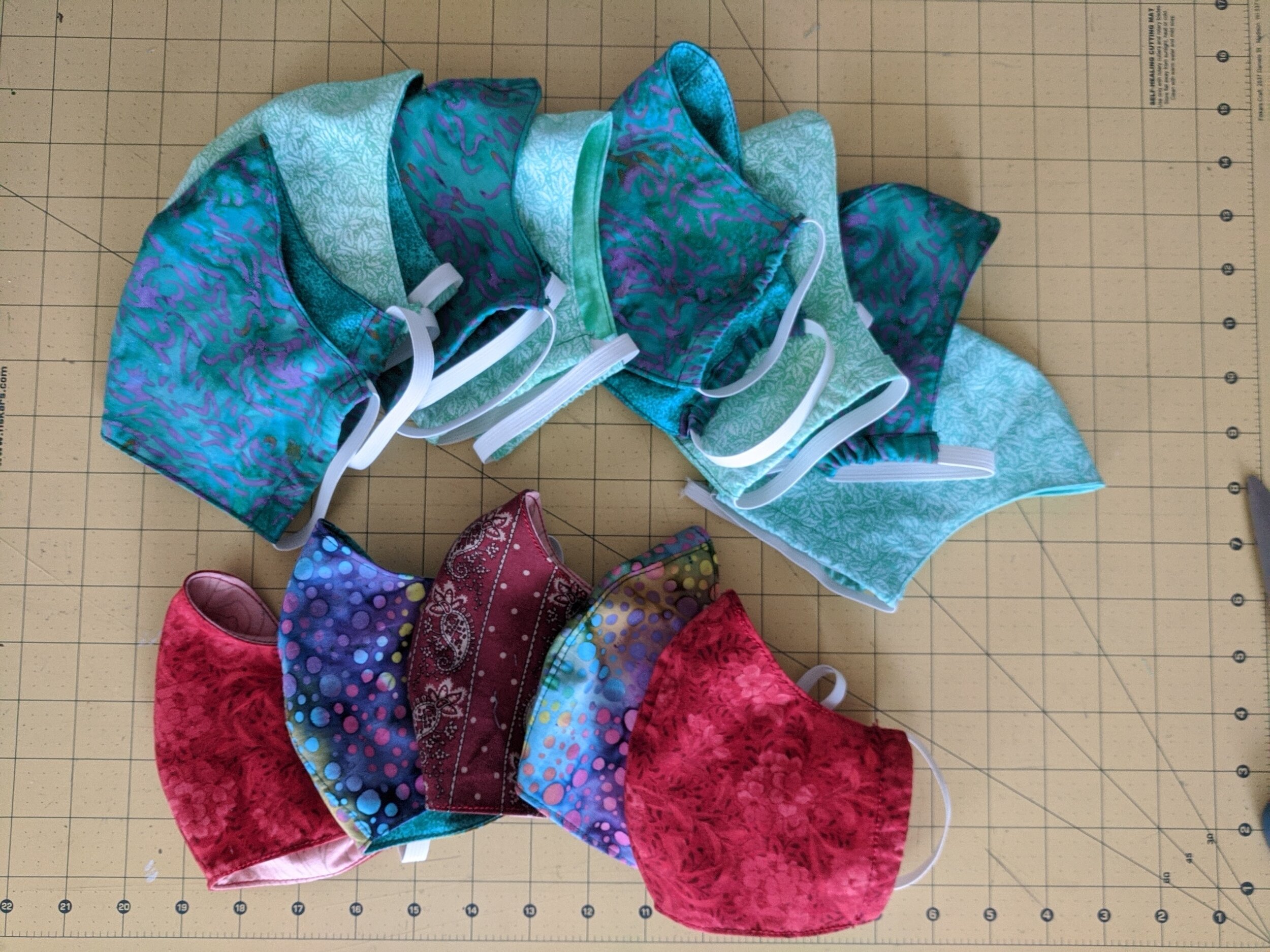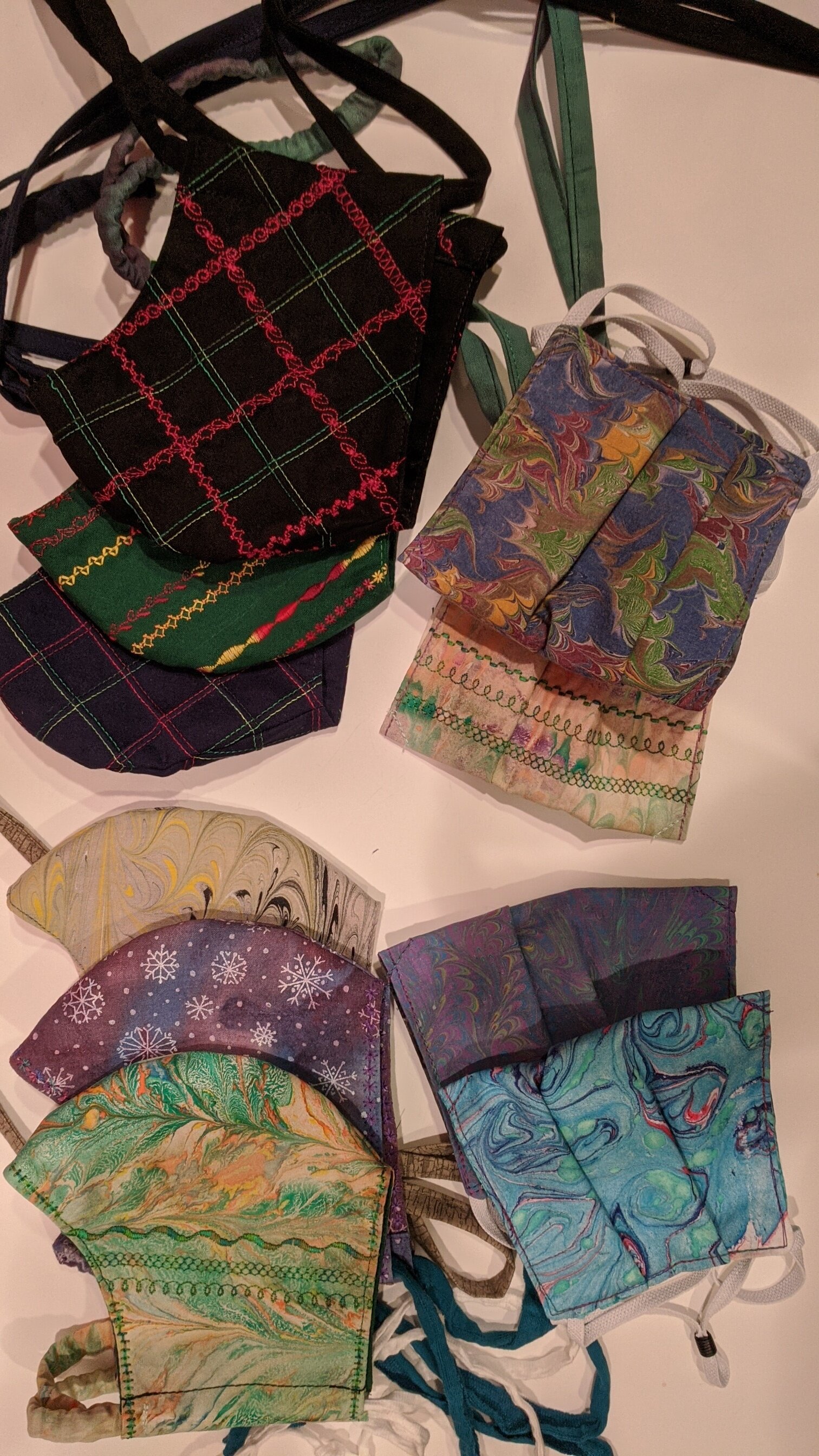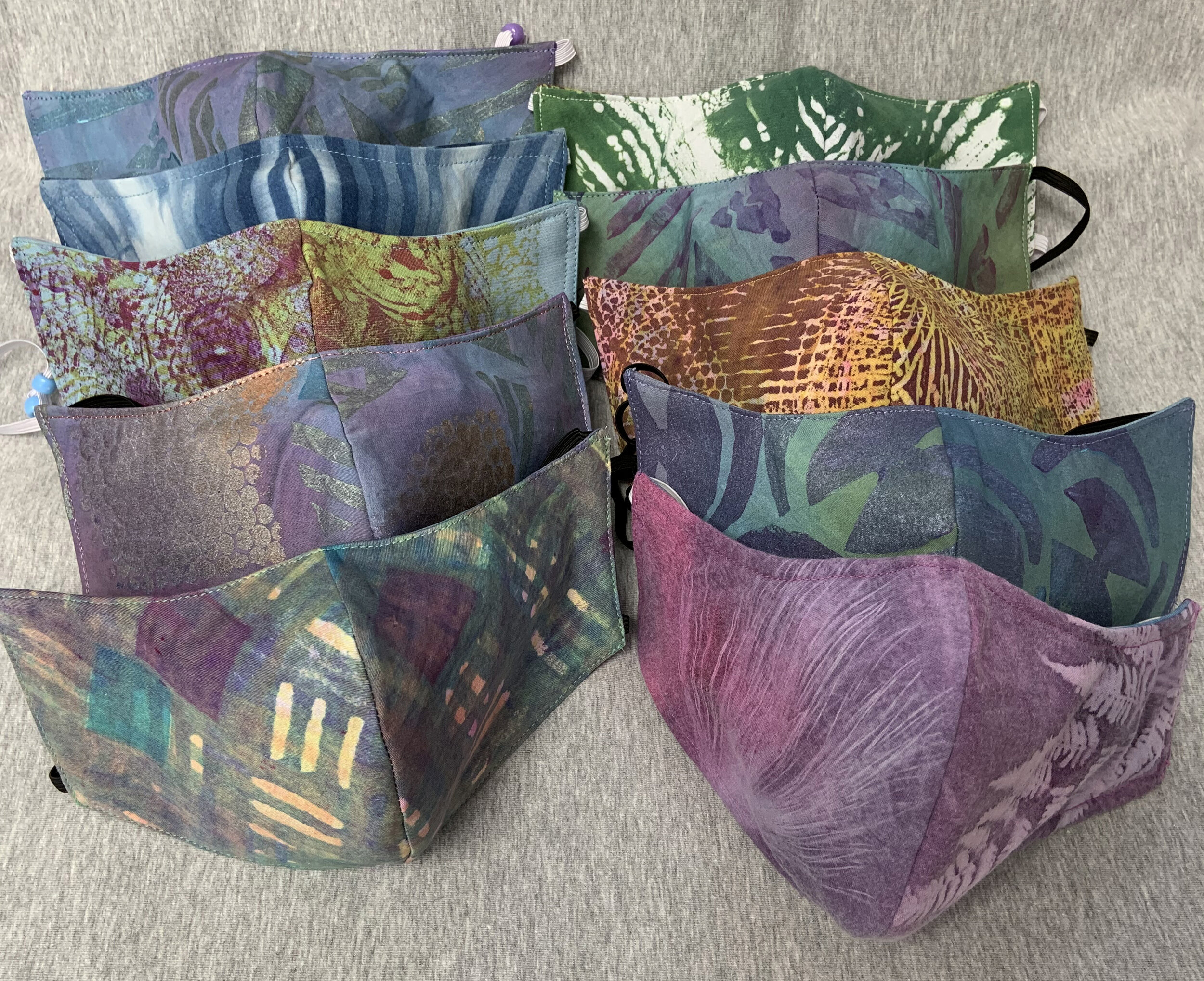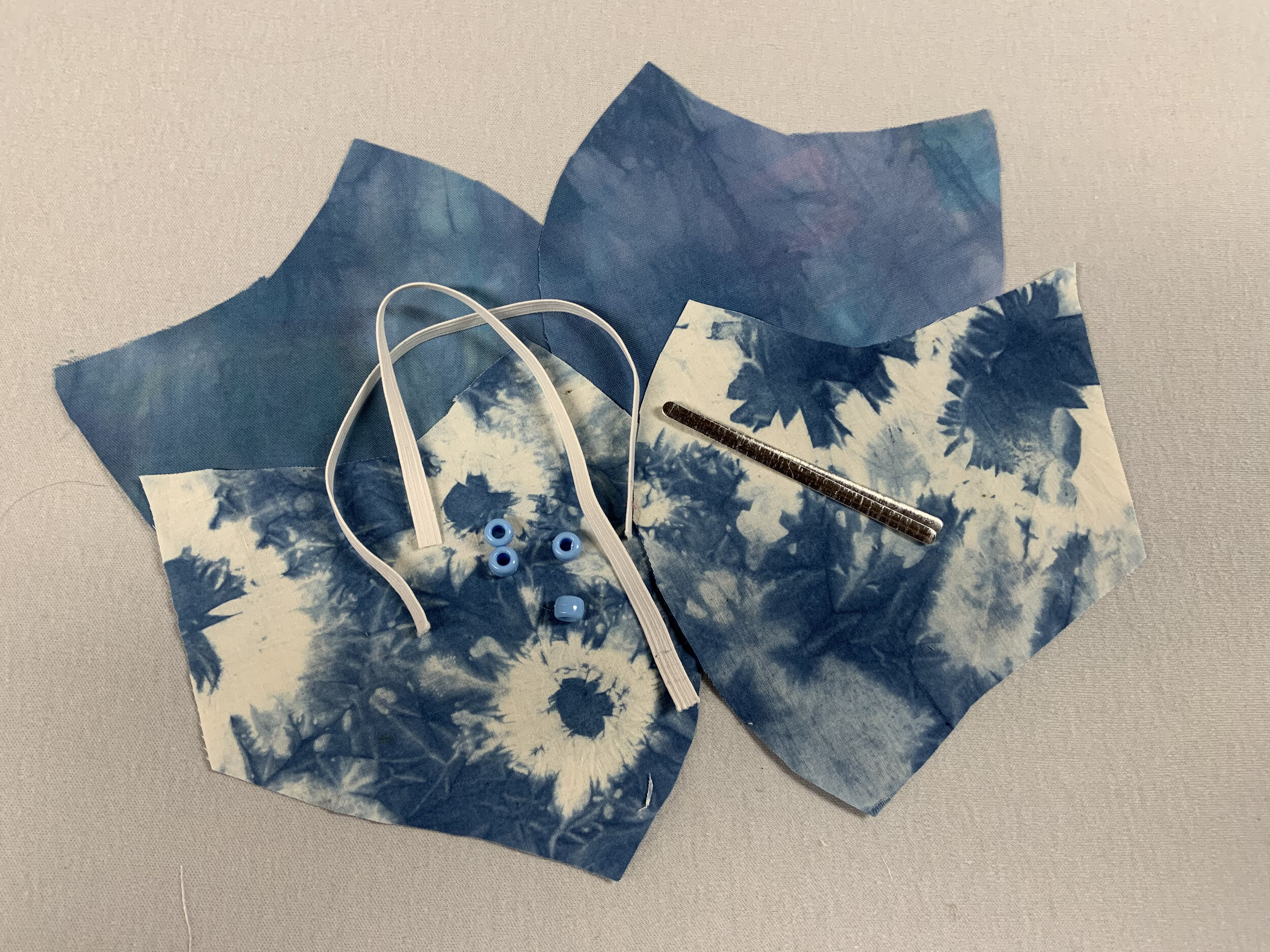Many of the members of the Gallery have stepped up to the task of protecting people from COVID 19. Here are some of their creations.
Fran Spaeder - Last spring I joined the Million Mask Challenge. I made 200+ masks for family, friends, DC’s Beacon House and the Navajo Nation. I made masks for the gallery when it reopened. My masks are all cotton with an inner layer of non-woven interfacing. Fronts are patchwork, backs are not. Ear attachments are 1/4 “ elastic with adjustable toggles. Washable. Nose & chin darts provide a close. Spaederfran@gmail.com (Last two images in the slideshow.)
Janet Stollnitz - I was slow to jump on the mask-making bandwagon when health officials recommended that people wear masks as I had a small supply of N95 and dust masks that I used when dyeing. However, as the weeks passed, I realized that my supply would be depleted before the pandemic abated. I surfed the net looking for mask patterns and suggested materials: quilting cottons, non-woven interfacing, narrow elastic, and pony beads. In addition to dyeing, Although I’m not a quilter, I dye, print, and stamp cotton fabrics suitable for quilting—perfect for masks! Since my fabric supply consists of unique, small pieces, each mask is one-of-a-kind. (Middle two images in the slideshow.)
Eileen Doughty - When the CDC began to recommend the wearing of masks last spring, I started to see posts on social media about making and donating masks. Eventually I heard of the Million Mask Challenge, which became quite active in the Metro DC area. They vetted the need for donations, and they had tested enough variations to come up with a simple and effective, and fairly comfortable, version. This was in April, and the world seemed to be closing down (and PFAG temporarily closed), sucking my creativity down a black hole with it. Making masks was mindless enough that I felt I was at least doing something worthwhile.
Through late spring, summer, and early autumn, I made and donated almost exactly 600 masks. They went to medical centers, social workers, teachers, first responders. Some went to Seattle to be handed out at Black Lives Matter protests. My stash in my sewing room slowly decreased over those months. I uncovered fabric I had forgotten I had, had no idea why I had bought it or what I had surface-designed it for. It was doubly pleasing to use up the fabric for a good purpose.
Elastic was a different story. I quickly went through the little I had. The Million Mask organization sometimes had some to give away. A shout-out to PFAG members Joyce Keister and Joanne Bast, who send me yards and yards for free.
As PFAG reopened, and the autumn saw the Covid cases seeming to decline a bit, my creativity began to return. I started thinking about upcoming holiday sales opportunities. The Million Mask pattern didn't seem special enough to sell in a fine art gallery, and the pleats didn't offer a nice "canvas" for what I like to create. Another PFAG member, Mickey Kunkle, had been making nice masks and gave me some tips. I liked how the mask wasn't pleated, it's elastic over the head was in a fabric casing, and it tied behind the neck. So I had a nice "canvas" to work on. It also allowed me to design some that men might like to wear.
My stash shelves are much emptier, and I have a bit of elastic left. I am looking forward to masks no longer being a "thing" in my inventory. (First two images in the slideshow.)
http://DoughtyDesigns.com





